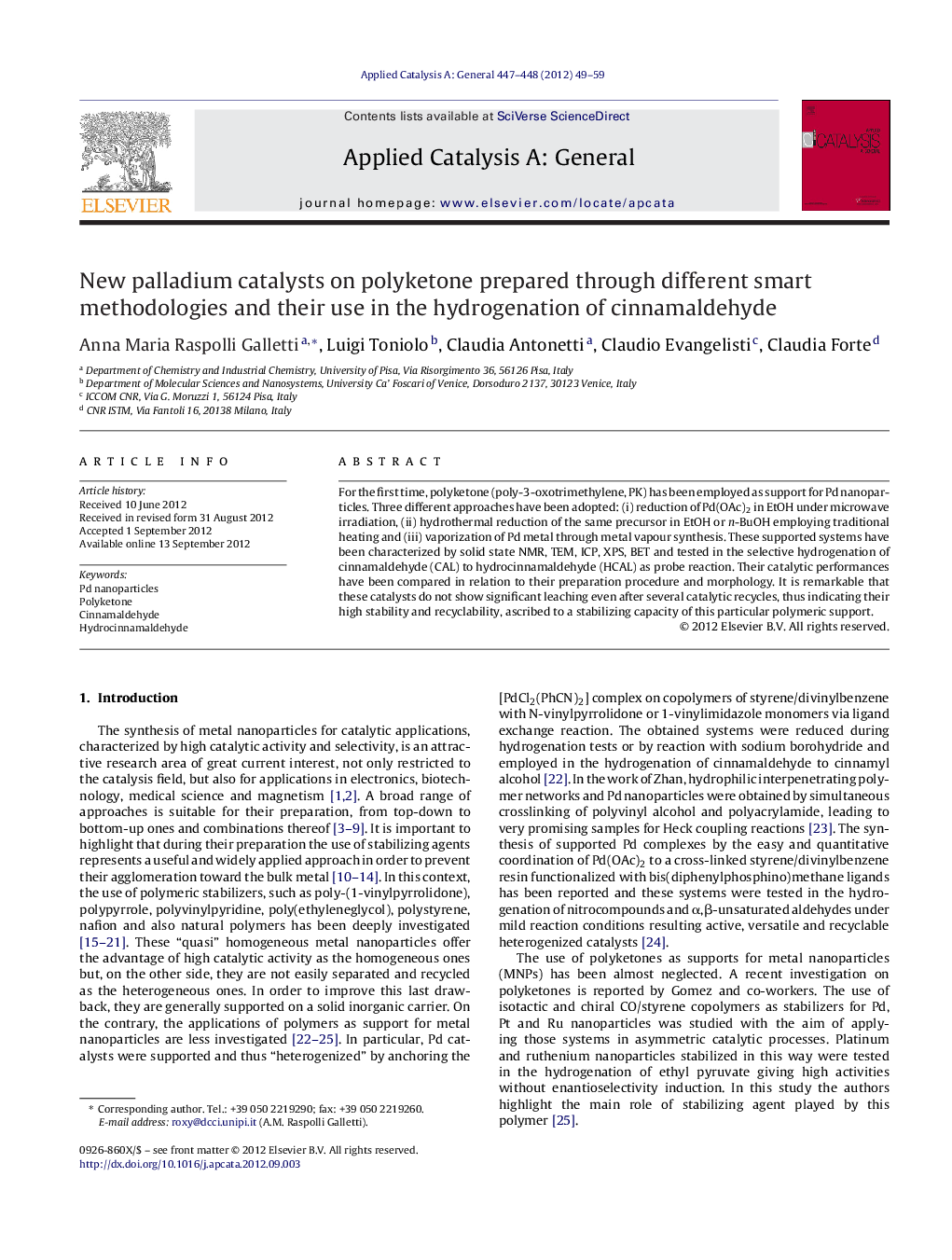| کد مقاله | کد نشریه | سال انتشار | مقاله انگلیسی | نسخه تمام متن |
|---|---|---|---|---|
| 40618 | 45860 | 2012 | 11 صفحه PDF | دانلود رایگان |

For the first time, polyketone (poly-3-oxotrimethylene, PK) has been employed as support for Pd nanoparticles. Three different approaches have been adopted: (i) reduction of Pd(OAc)2 in EtOH under microwave irradiation, (ii) hydrothermal reduction of the same precursor in EtOH or n-BuOH employing traditional heating and (iii) vaporization of Pd metal through metal vapour synthesis. These supported systems have been characterized by solid state NMR, TEM, ICP, XPS, BET and tested in the selective hydrogenation of cinnamaldehyde (CAL) to hydrocinnamaldehyde (HCAL) as probe reaction. Their catalytic performances have been compared in relation to their preparation procedure and morphology. It is remarkable that these catalysts do not show significant leaching even after several catalytic recycles, thus indicating their high stability and recyclability, ascribed to a stabilizing capacity of this particular polymeric support.
Figure optionsDownload high-quality image (120 K)Download as PowerPoint slideHighlights
► Polyketone has been employed for the first time as support for Pd nanoparticles.
► Three different synthetic approaches were adopted.
► The hydrogenation of cinnamaldehyde to hydrocinnamaldehyde was studied.
► The catalysts showed high stability and recyclability.
► The performances are related to Pd nanoparticles morphology.
Journal: Applied Catalysis A: General - Volumes 447–448, 7 December 2012, Pages 49–59